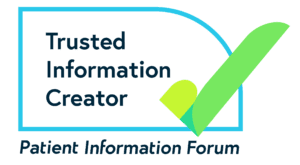When she was younger, CoppaFeel! Young Collaborator Keisha found a lump in her breast and she had breast pain. Her GP referred her to a breast cancer clinic. The tests showed no signs of breast cancer and the lump was not breast cancer.
She did the right thing, and got checked out. If you notice any unusual changes to your chest, speak to your GP. Remember to check your chest every month.
In this video, Keisha asks Advanced Nurse Practitioner Veronica about breast pain specifically so we can all understand breast pain better.
Time stamps:
- 0:48 – How common is breast pain?
- 1:08 – Symptoms of breast pain
- 1:19 – Types of breast pain
- 2:20 – Is some types of breast pain normal?
- 3:58 – Characteristics of new and unusual breast pain
- 5:21 – Reassurance for those worried about cancer
- 6:33 – Breast pain pathways
- 7:29 – How persistent does breast pain have to be for it to be considered problematic?
Here are some words used in the video:
Advanced Nurse Practitioner – Advanced Nurse Practitioners (ANPs) are experienced and highly educated Registered Nurses who manage the complete clinical care of their patients. Veronica talks about women in this video. This NHS service invites women only.
Fluctuates and fluctuations – Another word for fluctuate is change.
Intermittent – Not happening regularly or continuously. Stopping and starting repeatedly or with periods in between.
Persistent – Lasting for a long time.
Analgesia – Drugs that stop you from feeling pain
Indicative of cancer – Sign of cancer
Cancer diagnostic clinic –This is a clinic which tests people to see if they have cancer.
